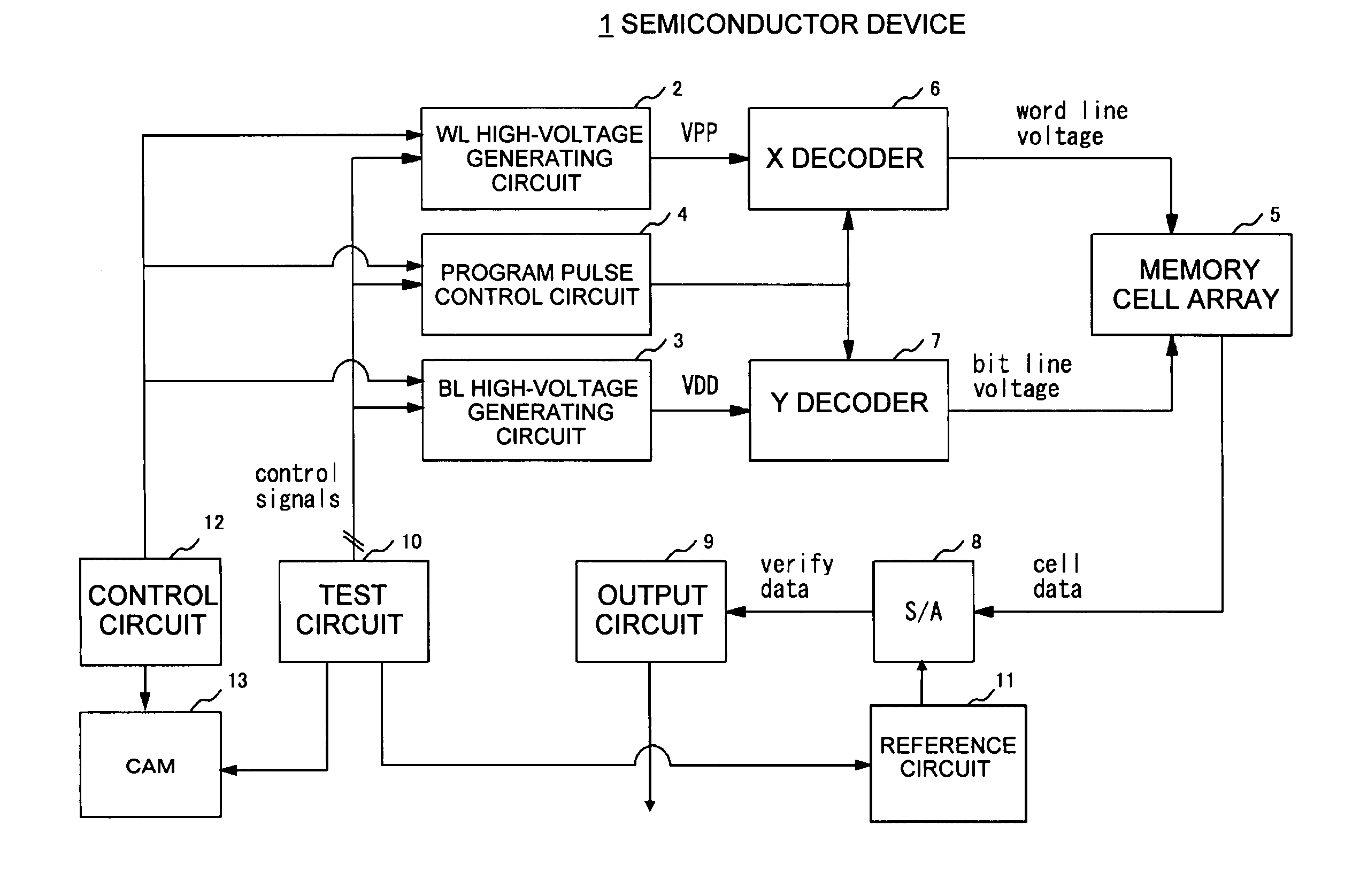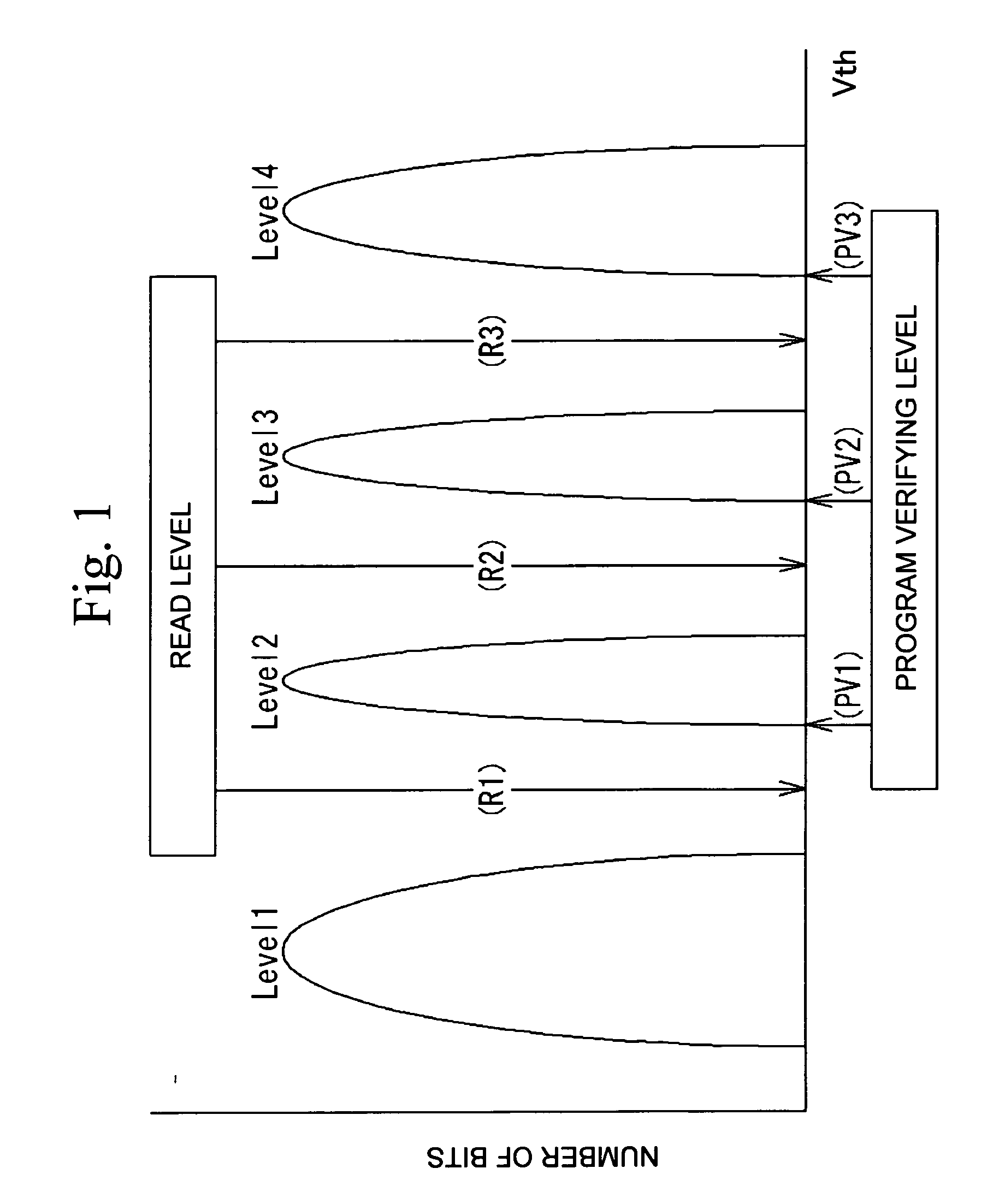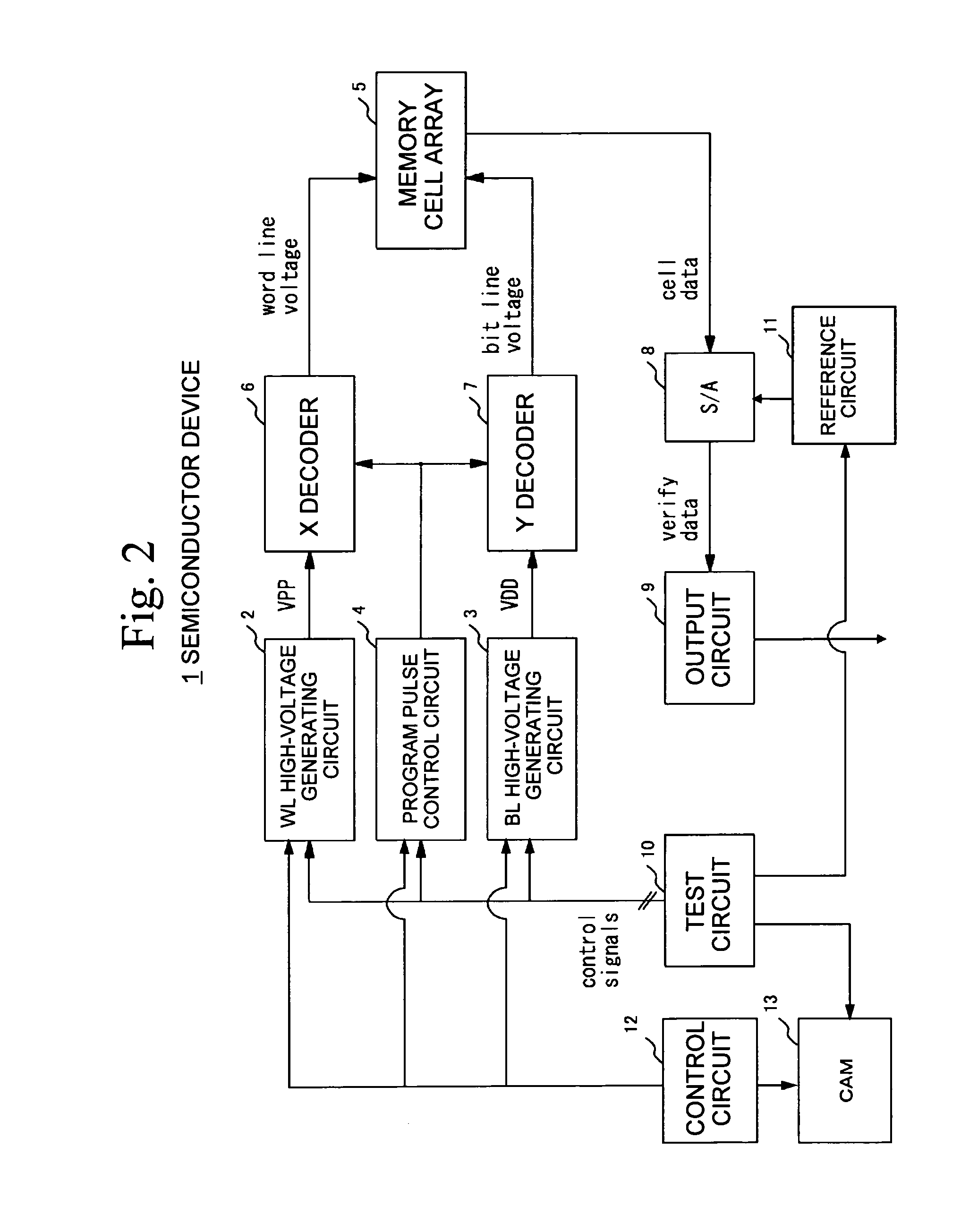Semiconductor device, semiconductor device testing method, and programming method
a technology of semiconductor devices and programming methods, applied in the direction of static storage, digital storage, instruments, etc., can solve the problems of not specifically revealing how the optimum programming conditions such as program widths are actually determined, and the document does not specifically disclose how. , to achieve the effect of reducing the number of pulses, and reducing the number of programming times
- Summary
- Abstract
- Description
- Claims
- Application Information
AI Technical Summary
Benefits of technology
Problems solved by technology
Method used
Image
Examples
first embodiment
[0074] A first embodiment is now described. FIG. 2 is a block diagram of a semiconductor device 1 in accordance with the first embodiment. As shown in FIG. 2, the semiconductor device 1 includes a WL high-voltage generating circuit 2, a BL high-voltage generating circuit 3, a program pulse controller 4, a memory cell array 5, an X decoder, a Y decoder 7, a sense amplifier circuit 8, an output circuit 9, a test circuit 10, a reference circuit 11, a control circuit 12, and a CAM 13. The semiconductor device 1 may be a semiconductor memory device such as a flash memory that is packaged independently, or may be incorporated into a semiconductor device such as a system LSI.
[0075] The WL high-voltage generating circuit 2 in a test mode receives a control signal from the test circuit 10, and generates and supplies a booster voltage VPP to the X decoder 6. The X decoder 6 applies a word line voltage. The BL high-voltage generating circuit 3 in the test mode receives a control signal from t...
second embodiment
[0101] Next, a second embodiment of the present invention is described. The multi-value memories have four Vt levels of level 1, level 2, level 3, and level 4. Those four levels constitute two sets of output (or input) data. Here, level 1, level 2, level 3, and level 4 are defined as (1, 1), (0, 1), (1, 0), and (0, 0) as two sets of input / output data. When the data of level 4 is programmed, a programming technique by which a memory cell is programmed through each programming to level 2, level 3, and level 4 performed in order is generally used. By this technique, in the cells to be written at level 4, first, the cells are written to level 2 by a first programming flow.
[0102] Next, the cells are written to level 3 from level 2 by a second programming flow. Lastly, the cells are written to level 4 from level 3 by a third programming flow, and all the programming operations are ended. For the memory cells in which programming is required only up to level 2 or level 3, actual programmi...
PUM
 Login to View More
Login to View More Abstract
Description
Claims
Application Information
 Login to View More
Login to View More - R&D
- Intellectual Property
- Life Sciences
- Materials
- Tech Scout
- Unparalleled Data Quality
- Higher Quality Content
- 60% Fewer Hallucinations
Browse by: Latest US Patents, China's latest patents, Technical Efficacy Thesaurus, Application Domain, Technology Topic, Popular Technical Reports.
© 2025 PatSnap. All rights reserved.Legal|Privacy policy|Modern Slavery Act Transparency Statement|Sitemap|About US| Contact US: help@patsnap.com



